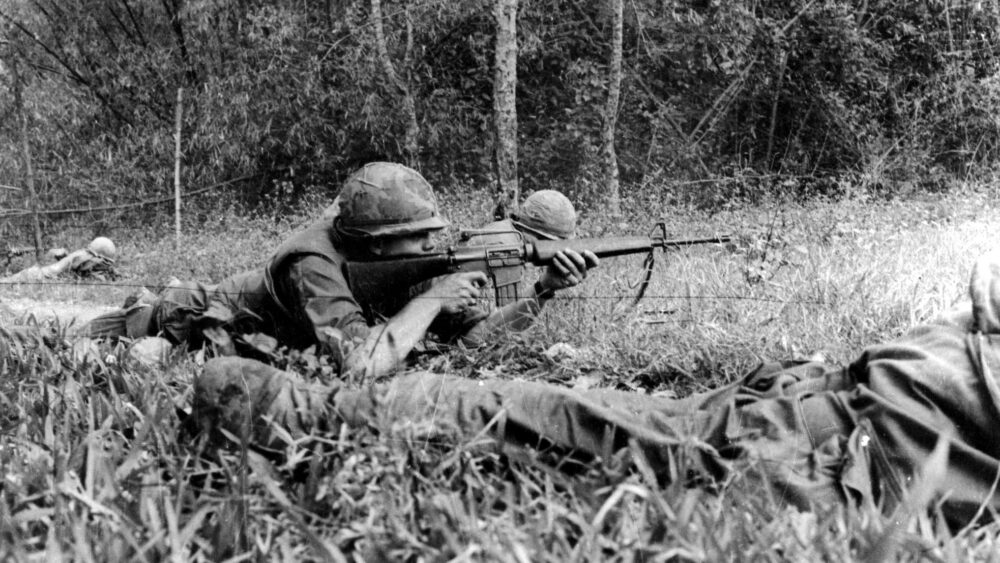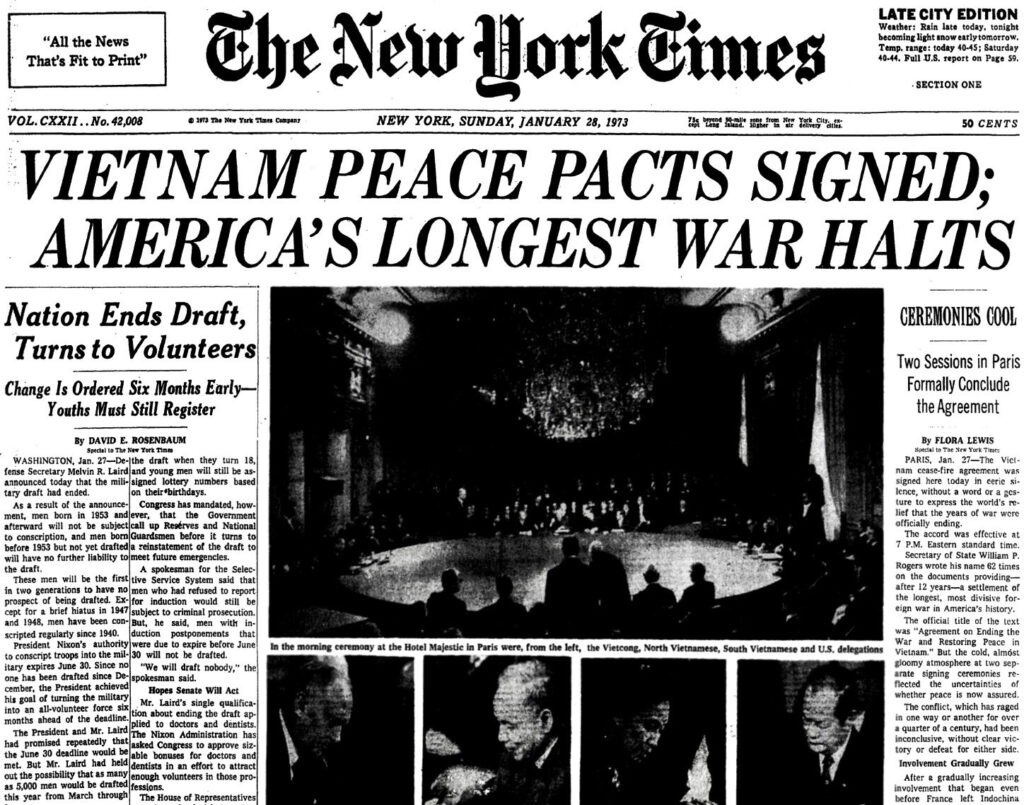These next few days on the calendar are fateful ones for anyone who contemplates the history of America’s involvement in Southeast Asia.
At the end of January, 55 years ago, our forces experienced the biggest shock of the Vietnam War. On the 30th and 31st of the month, the North Vietnamese Army and Viet Cong launched a multitude of surprise attacks against key targets throughout South Vietnam – not just in the north, or in the Central Highlands, or the Mekong Delta, but everywhere. They hit more than 100 towns and cities, including 36 of 44 provincial capitals, and Saigon. When the Tet Offensive ended two months later, it was militarily a failure. But politically, it helped lead to American discouragement and eventual withdrawal, and eventually, complete victory for Hanoi.
This Jan. 27 is the 50th anniversary of the signing of the Paris Peace Accords, in which America agreed to abandon the battlefield, and enabled the communist forces to roll to victory in 1975.
Lest we forget these things, there could hardly be a better week to visit the South Carolina Confederate Relic Room and Military Museum and see the major new exhibit, “A War With No Front Lines: South Carolina and the Vietnam War, 1965-1973.” The sprawling exhibit, which just opened on Veterans Day in November, is the first effort to tell the stories of the thousands of South Carolinians who fought in that faraway conflict.
It not only relates the history, but shows the uniforms your neighbors wore, the things they carried, and the weapons they fought with. You can hear the veterans’ voices tell the tale, and familiarize yourself with the environments in which they served – rice paddies, war-torn cities, the Highlands, the streams and swamps of the Mekong Delta, and the skies above.
And Tet is well represented, from a large case of artifacts labeled “The Turning Point” to a life-sized urban warfare scene set in a battle-damaged house in the city of Hue – which the NVA managed to take, only to lose it back to Marines such as the ones depicted in the urban scene.
Tet, a shorthand version of the Vietnamese name for the Lunar New Year, was Hanoi’s effort to trigger a popular uprising that would lead to the collapse of the South Vietnamese government. That did not happen. And the brief military gains were all beaten back by the Army of the Republic of Vietnam and American forces.
In a way, it was a microcosm of the whole war. The U.S. armed forces won all their battles and yet lost the war, and Tet was a big reason President Nixon eventually agreed to pull America out of the fight. The U.S. public, which had believed the North Vietnamese were being defeated and incapable of launching such an ambitious military operation, had experienced a shock from which it never recovered politically.
Come see how it all happened. Learn more about the museum’s Vietnam exhibit here: https://scinvietnam.com/.




Comments are closed.